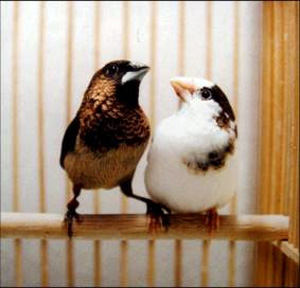A new study shows the Bengalese finch (Lonchura striata var. domestica) can learn the rules of an artificial grammar system - hierarchical language structure has been previously thought to be specific only to humans.
Kentaro Abe and colleagues tested whether songbirds could use information about syntax in the syllables of natural birdsong to discriminate between songs. They also taught the birds artificial grammar rules from songs which the authors created. In both cases, the birds appeared to be sensitive to the structure of the songs.
Humans recognize syntactically 'bad' grammar in their languages - not things like confusing when to use 'who' and 'whom' but instead specific regions of the brain light up when actual language violations occur. Like humans, the Bengalese finch uses syntactically complex songs with variable sequences of syllables that are not random but the researchers contend it may be more than that - humans may not be the only ones who can detect grammar.

Bengalese finch
While humans can create a virtually infinite number of sentences using grammar rules that are a fundamental part of the communication, it would be interesting to find that the sequential orderings of syllables used by songbirds contains information of its own also.
Do they? Yes and no. Sometimes the songbirds could detect tiny syllable variations and sometimes not at all but, when it comes to language, it may be songbirds are a lot closer to humans than monkeys are.






Comments